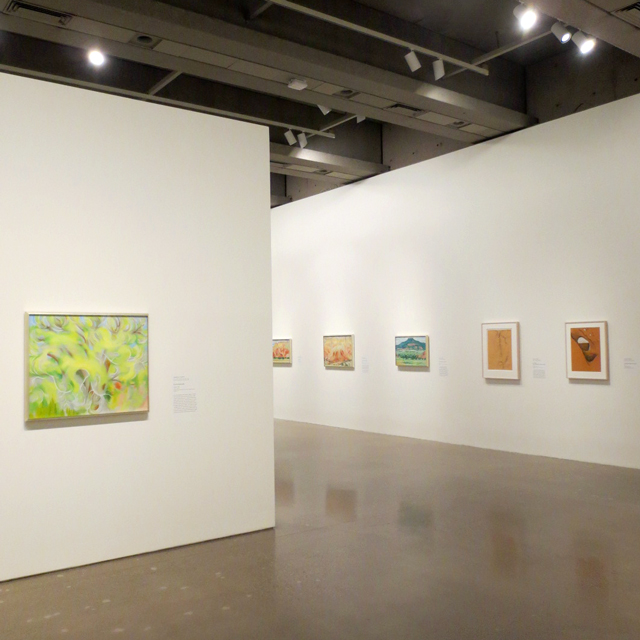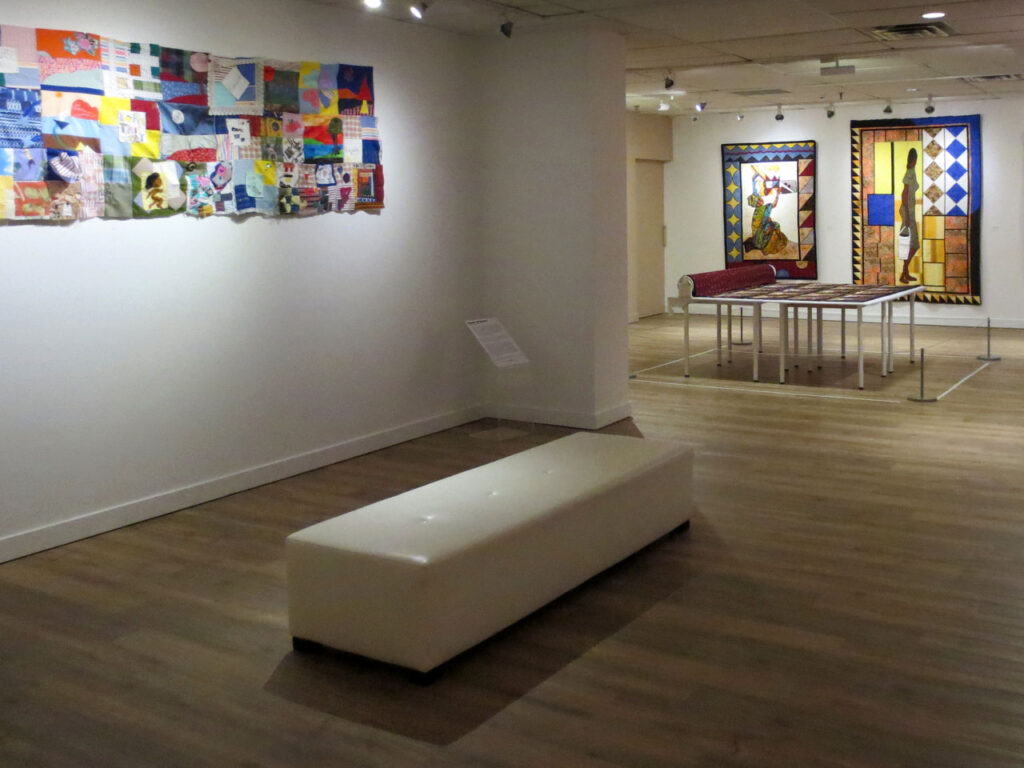When a child decides she will be an artist at the age of ten, and then goes on to create consistently for the next eight decades, there undoubtedly would be a huge number of pieces to choose from, when putting together a retrospective exhibition of her work. Having seen The Georgia O’Keeffe Exhibition currently on at The AGO, I’d say those who selected the 80 pieces on display, did a great job — every piece draws you in, encouraging you to take a good look.
American artist Georgia O’Keeffe was the second of seven children born on a Wisconsin farm in 1887, living to the age of 98. While she was recognized as the “Mother of American modernism”, the illusion to being female implicit in that title would have annoyed her — she wished to be known as a great and dedicated artist, period, regardless of gender.
It is estimated that she created 2,000 works. Her painting Jimson Weed sold for $44.4 US in 2014, making it the highest valued piece of art ever created by a female, by a multiple of more than three times. The seller was The Georgia O’Keeffe Museum in Santa Fe New Mexico. A fun fact about that painting — it was commissioned by Elizabeth Arden in 1936, to be hung in gym of her Fifth Avenue Salon in New York City, where the unfurling blossoms would encourage her clients in their stretches. Arden paid the exorbitant sum of $10,000 for the largest floral composition O’Keeffe would ever create. While that specific painting is not in the AGO show, as you’ll see below, there is a breathtaking Jimson Weed painting included — she grew them around her porch so they were a ready subject.
Toronto is the only Canadian stop for this show, which was organized by The Tate Gallery in London, in collaboration with The AGO. It runs until July 30th so there’s plenty of time to see it, if you’re in the city.
Normally photography is not permitted, however, in order to give you a little peek at what awaits, a group of bloggers were invited for a tour and allowed to take pictures to share on our sites. And they generously offered room for one guest each, so Nick came along too.
The tour was expertly led by Interpretive Planner Gillian McIntrye, who played a significant role in organizing the show. In fact, she was present when the paintings arrived at the gallery and watched as each was removed from its packing crate, which must have been a really neat experience.
Although the show begins with early works, the art is organized more by subject matter/style than it is by strict chronological order. That said, since she added subjects, moved locations and modified her style as life progressed, there is an inevitable movement through the decades built in.
We begin with some early abstracts, most of which were created while she was in her mid to late 20s ….
↑ Red and Orange Streak – 1919 ↑
↑ Abstraction White Rose – 1927 ↑
↑ Black, White an Blue – 1930 ↑
In 1918, at the age of 30, she moved to New York, after having met photographer, modern art promoter and gallery owner Alfred Stieglitz, who offered her financial support and a place to live and paint. Stieglitz was married and nearly twice her age, but he moved in with Georgia one month after her arrival in the city. He was well established in the art scene, and introduced her to his circle of friends and showed her art in his highly regarded gallery.
Six years later, Stieglitz divorced his wife and he and Georgia were married.
The next couple of sections of the show include her paintings of New York scenes …
↑ New York, Night AND Ritz Tower, Night – 1928 ↑
↑ East River From the 30th Story of the Shelton Hotel – 1928 ↑
… and inspired by what she saw where they spent their summers, Lake George in upstate New York …
↑ From the Lake No.1 – 1924 ↑
↑ Lake George Barns – 1926 ↑
↑ Apple Family 2 – 1920 ↑
↑ Autumn Leaves, The Maple – 1924 AND Grey Tree, Lake George – 1925 ↑
Then visitors come upon a section dedicated to photography, including some portraits of Georgia and Stieglitz taken by Arnold Newman in 1944, and a number of portraits Steiglitz took of her. There are examples chosen from the 350 he produced during their first few years together, marking the most prolific period of his life as an artist.
Following that, we enter a room displaying a selection of her famous paintings of flowers. In all, Georgia made about 200 flower paintings, even though she is known to have stated that she wasn’t really interested in flowers, and that, actually, she hated them but painted them because they were cheaper than models and they didn’t move.
↑ Oriental Poppies – 1927 ↑
↑ Jimson Weed / White Flower No. 1 – 1932 ↑
↑ Here you’ll find the 1924 painting, The Eggplant, which finds its full-time home at The AGO. It was bought by Toronto artist and art patron Dorothy Huestis Mills in 1926, after she saw it in a New York exhibition, making it the first Georgia O’Keeffe work to be collected outside the United States. In 1990 it was donated to the gallery by Dorothy’s husband, in her memory. ↑
Unfortunately, in 1928 when she was 40, Stieglitz cheated on Georgia with a much younger woman a mere four years after their marriage, causing her much distress and resulting in a nervous breakdown. She was briefly hospitalized for depression and put down her paint brush for a year or so. (Interestingly, she remained married to him until his death at 82 in 1946.)
While this must have been very difficult time for her, hindsight tells us that some good came from it, in that, while she was recuperating she spent time in New Mexico and ultimately decided to live there. It was in New Mexico that her iconic paintings of the desert and animal sculls began.
↑ Horse’s Skull and Pink Rose – 1931 ↑
In an area adjacent to that are a number of stunning desert landscapes and some photographs of her taken by Ansel Adams and Arnold Newman.
↑ by Arnold Newman – 1968 ↑
Since it was so sunny and hot out in the desert, she used to drive a car out to where she wanted to be and then paint from within that, therefore creating a portable studio that kept her protected from direct sun.
↑ Not all the desert paintings were taken away from home though, as this one is called “My Front Yard, Summer” (1941) and depicts her everyday view. ↑
Following that, you enter the final section of the show, one that contains abstracts and “skyscapes” — she’d taken to travelling far and wide by airplane, gleaning inspiration for paintings by looking down and around from the plane. These include paintings that look like abstracts but represent roads and landscape as seen from way up in the sky.
I’m assuming the following quote pertains to the 1962 painting below, called “Sky With Flat White Cloud” …
↑ Nick was in the room when I loaded this shot up on my computer at home. I laughed at his stiff position, commenting that he could have tried to look a little more comfortable. His response : “I did that on purpose … I was being still and flat like the painting.” ↑
↑ It Was Blue and Green – 1960 ↑
↑ Dynamic tour guide and AGO Interpretive Planner, Gillian McIntrye. ↑
↑ Pelvis 1 – 1944 ↑
↑ Black Door With Red – 1954 ↑
↑ The show ends with a dramatically large reproduction of a portrait of Georgia, taken by Yousuf Karsh at her New Mexico home in 1956. ↑
The Georgia O’Keeffe Exhibition at The AGO is a rich and wonderful show and I hope you get the chance to see it yourself. It is a ticketed exhibit, that will hang at the gallery between April 22nd and July 30, 2017.
Thank you for reading. Also, thanks to the organizers of this tour for inviting us.
xo loulou







































